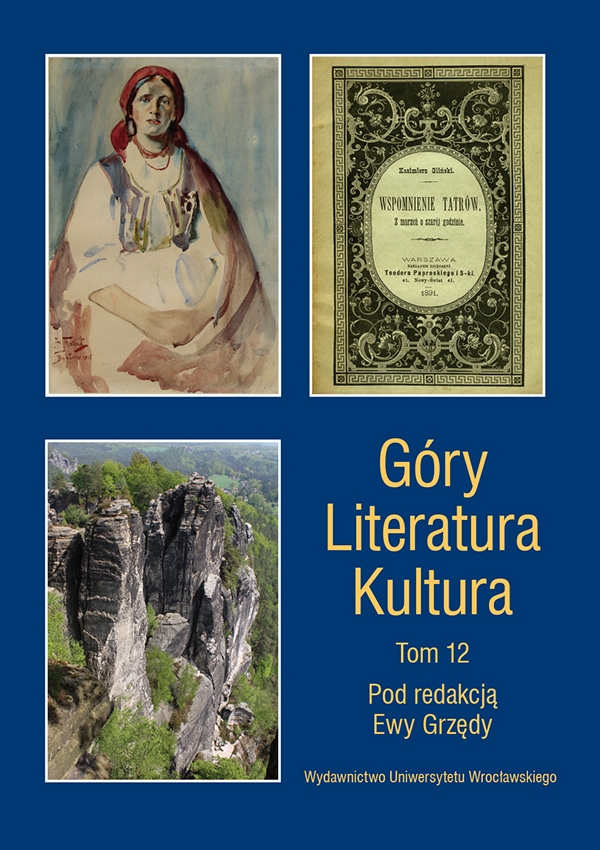

Artykuły i rozprawy

On the history of mountain-related topics in Czech literature: František Palacký and Milota Zdirad Polák
The literature of the Czech national revival produced a unique type of cestopis travel account, which, from a Polish point of view, could be regarded as an equivalent of accounts of Polish Romantic travels of fellow countrymen across their country. In the Czech literature we can distinguish a clear thematic group associated with the Karkonosze mountains. It includes M.S. Patrčky’s O Krkonošských horách 1823, Josef Myslimír Ludvík’s Myslimír, po horách krkonošských putující 1824, Karel Slavoj Amerling’s Cesta na Sněžku 1832, Karel Hynek Mácha’s Pouť Krkonošská 1833–34, František Tomsa Přátelské dopisy z cesty na Sněžku 1845, Josef Frič’s Cesta přes Friedland na Krkonoše 1846, and Karel Hanuš’s Cesta na Sněžku 1847. These works testify to an expansion of themes tackled by literature during the so-called national revival. Characteristic forms of the period conformed to the Classical, pre-Romantic and Romantic conventions. One of the most interesting themes tackled by literature in those days were the mountains. In line with the spirit of national revival, the Czech cult of the domestic was expressed in the linking of the homeland and its landscape with important aspects of Czech national identity. This convention of referring, as means of self-identification, to spatial symbolism and its vocabulary was visible in the Czech and Slovak culture in several aspects. The vocabulary of Czech national symbols now included the Karkonosze mountains, Šumava or the Bohemian Forest, the Tatras and the Blanik hill. František Palacký referred to landscape-linked symbolism in his ode Na horu Radhošť, added to his youthful work, written together with Pavel Josef Šafařík, Počátkové českého básnictví obzvláště prosodie 1818. The poem formally served as an example illustrating theoretical analyses of poetry included in the study in question. Using the fact that Radhošť was a mountain in Moravia, Palacký included the mountain as a motif in a rather unique founding myth associated with the local Moravian patriotism. Thus mountains became a representative motif of the literature of the Czech national revival. When it comes to Czech poetry, mountain motifs were introduced into it on a broader scale for the first time by Milota Zdirad Polák Matěj Polák, 1788–1856 in his descriptive poem Vznešenost přírody 1819. Polák’s novelty lay in his introduction into Czech literature of a new genre, descriptive poem, as well as linguistic experiments neologisms thanks to which he developed his own poetic language. Using the category of the sublime as a tool to interpret the natural phenomena he described, Polák sought to demonstrate the richness of the forms of the world, their complexity and diversity. That is why the catalogue of motifs he used is vast. It accorded an appropriate place to the mountains with a brave attempt to concretise their motif: fragments of the poem deal with the Alps, a description of the Karkonosze mountains is highlighted and there is also a motif of volcanic eruption. Undoubtedly the most interesting and artistically the most valuable is an extensive fragment of the poem devoted to the Karkonosze mountains. The fear of the horror of high mountains, the Alps, described in the poem, found its equivalent in the writings of Jan Kollár 1793–1852, who presented his emotions associated with his stay in the Alps in an account of an 1841 journey to Italy Cestopis obsahující cestu do Horní Italie a odtud přes Tyrolsko a Bavorsko, se zvláštním ohledem na slavjanské živly roku 1841 konanou, Budin 1843. Both writers, Polák and Kollár, were hugely impressed by the mountains, but this did not lead to any Romantic reflection on their part.